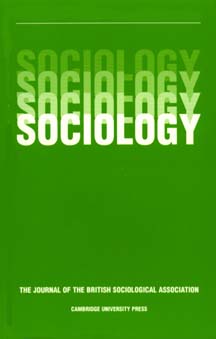The Mobility Transition: Social Mobility Trends in the First Half of the Twenty-First Century
Published online by Cambridge University Press: 01 February 2000
Abstract
Trends in absolute rates of both career and intergenerational mobility in Britain since the 1950s are outlined and some of the cultural consequences of the resulting heterogeneity in class composition are briefly considered. It is argued that while supply-side factors – educational attainment, ability, etc. – may determine who has been mobile or not, aggregate rates and changes in aggregate rates are largely dictated by demand-side factors. But current trends in the composition of the working population are necessarily self-limiting. A forecast of the occupational structure in the first half of the twenty-first century together with the assumption of some continuity in the pattern of class advantages, indicates a ‘mobility transition’ in which trends are likely to reverse within the next thirty years or so. The long-run replacement of recruitment heterogeneity by homogeneity of social experience in the enlarged middle class suggests that, in contrast with present-day pluralism, there will emerge the structural conditions for a greater cultural uniformity and the onset of an era of orthodoxy.
Keywords
- Type
- Research Article
- Information
- Copyright
- © 2000 BSA Publications Ltd
- 17
- Cited by


